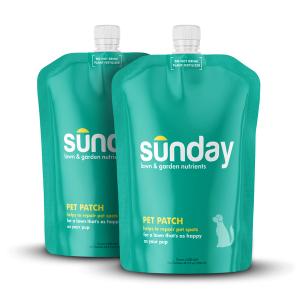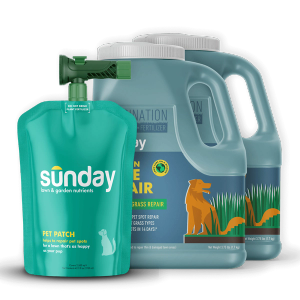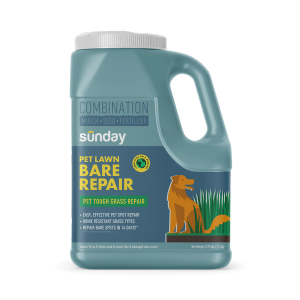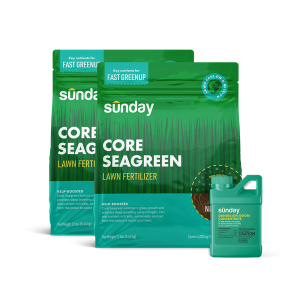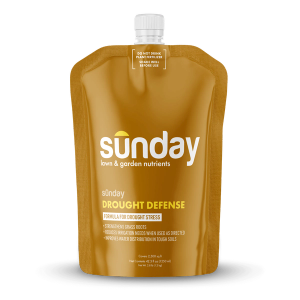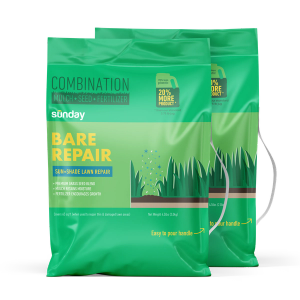How to fix compacted soils
We’ll get right to the point. If your soil is compacted, you can alleviate some of that densely packed soil with the following solutions:
Aerate the soil
Core aeration removes small plugs of soil to alleviate compaction and prevent thatch accumulation. You can do this yourself or contact your local lawn or garden care service for more support
Add organic matter
Amend your soil by adding organic matter, like compost. Decomposing organic matter helps build soil aggregates (Think: groups of soil particles) and restore soil structure.
Plant more grass
Re-establish grassplants in bare areas to prevent further compaction, and choose grass species with roots that can penetrate compacted soils,
Leave weeds with long taproots
Not all weeds are bad! Taproots of dandelions can help naturally break up and loosen the soil. Leave dandelions if nothing else grows in this section of lawn — just be sure to remove flowering heads and spot treat with Dandelion Doom before they set seed.
Patch bare spots
Repair remaining bare areas in the lawn. Bare soils are more prone to erosion and evaporation, which can lead to more compaction. If grass won’t grow, consider ground covers or deep-rooting perennials adapted to tougher soils. If nothing will grow, layer mulch over bare areas to avoid soil loss.
Audit your watering practices
Encourage deep root growth with proper watering practices. Deep and infrequent watering encourages healthy root growth and promotes soil microbial activity that prevent soil compaction.
Sunday Tip:
Most of the time, the six steps above will help most compacted soils. BUT when the job is way too big for a DIY afternoon, contact a local landscape company for help with plant selection and installation
Not sure if the issues you are seeing are from compaction? Keep reading to learn more about compaction and how it affects your lawn. We’ll even teach you how to check your lawn for compaction, and some steps to prevent it in the future.
What is soil compaction?
Compacted soils may struggle with proper water drainage or retention, reduced numbers of microorganisms, and reduced root growth. This negatively impacts the growth of the grass, and can result in thin or bare areas in the lawn.
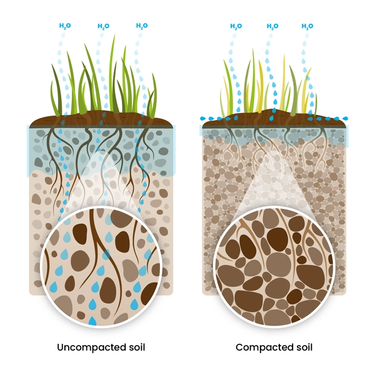
Take a look at the two soil profiles above. The one on the lefts shows a healthy soil with pores and water movement, and the one on the right showing a compacted soil lacking pores and water movement.
Sunday Tip:
Heavy traffic, excessive tilling, and some aspects of soil composition can all contribute to compaction in your lawn. Clay soils are more likely to suffer from compaction than sandy soils, and if your lawn is low in organic matter, compaction may happen more easily.
What are signs of soil compaction?
A common sign of soil compaction is thinning grass, or sometimes an area of the lawn that is struggling to keep up with the rest of the grass. If you are seeing areas of the lawn that are getting thinner, especially in high traffic areas, you may be dealing with compacted soils.
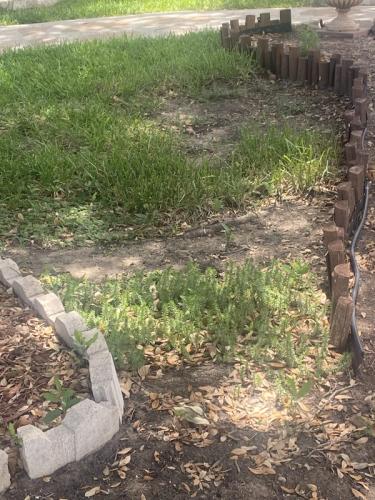
Another sign of compacted soils is poor water drainage. If there is water pooling following a normal rain or watering event, compaction may be hindering water drainage in that area.
Sunday Soil Compaction Test
Do you suspect or want to know if your soils are compacted? All you need is a screwdriver and your own strength to find out. Try this out:
- Take a screwdriver and push it into your lawn so it fully reaches your soil. You are aiming to push the screwdriver in at least 4 inches into the soil layer.
- If the screwdriver penetrates the soil with little resistance, then your soil is probably not compacted.
- If it is difficult to penetrate the soil with the screwdriver, then you may need to relieve compaction.
Sunday Tip:
Try to test your soil when it's a little moist. We recommend early morning or a few days after a normal rain event. Dry soils tend to be more difficult to penetrate and may affect your results.
Prevent soil compaction in your lawn
Prevention is the best medicine. If your lawn is not compacted, there are four things you can easily add to your lawn care routine to help support a healthy lawn with healthy soil.
- Save lawn care for when soils are not too moist. Saturated soil is more easily compacted.
- Reroute walk paths and play areas regularly to avoid heavy traffic in a single area. If you can’t, consider using pavers or mulch in those areas instead.
- To maintain grass in heavy traffic areas, monitor regularly for compaction, and use strategic aeration and topdressing to reduce compaction before it becomes an issue.
- Avoid tilling the lawn or aerating too often. It's possible to have too much of a good thing. Aerating too often can disrupt soil aggregate formation and cause more harm than good.
Sunday Tip:
Doing any new build construction or renovation? If so, try to use the lightest equipment possible in the smallest area possible in your lawn. Using heavier equipment across your lawn is more likely to cause soil compaction, and a smaller use area means less space to fix. Plan ahead for an aeration after work is finished.
Cited sources
Aerating Lawns. Clemson Cooperative Extension
Assessing and Addressing Soil Compaction in Your Yard. Rutgers New Jersey Agricultural Experiment Station (NJAES) Cooperative Extension
Combating Soil Compaction . University of Delaware Cooperative Extension
Practical Lawn Care for Western Oregon. Oregon State University Extension
What to do about compacted soil. Michigan State University Extension







